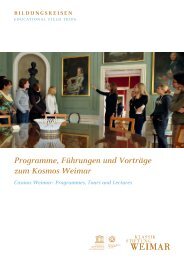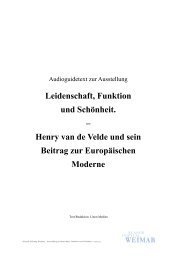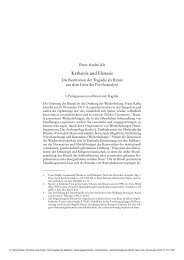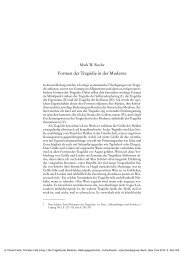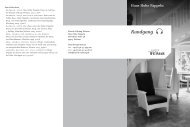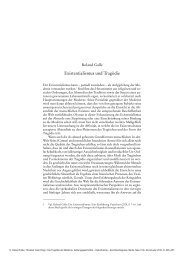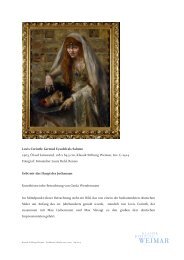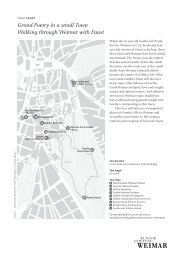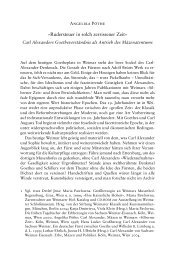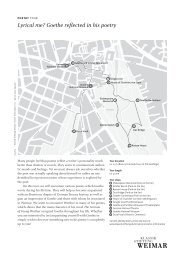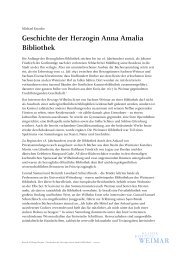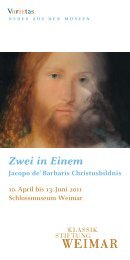FRANZ LISZT · EIN EUROPÃER IN WEIMAR - Klassik Stiftung Weimar
FRANZ LISZT · EIN EUROPÃER IN WEIMAR - Klassik Stiftung Weimar
FRANZ LISZT · EIN EUROPÃER IN WEIMAR - Klassik Stiftung Weimar
You also want an ePaper? Increase the reach of your titles
YUMPU automatically turns print PDFs into web optimized ePapers that Google loves.
Liszt in the concert hall, after a drawing by Theodor Hosemann, 1842<br />
Liszt’s grand piano from the company “Boisselot & fils”, Marseille 1846<br />
We had never heard anything like it in our lives,<br />
never such a passionate, brilliant and demonic<br />
temperament, one minute lashing like a whirlwind,<br />
the next flowing in cascades of beauty and grace.<br />
Liszt’s playing was absolutely overwhelming […]<br />
W. Stasov, about a concert in St. Petersburg, 1842<br />
The second part of the exhibition in the Palace Museum is titled<br />
Piano Cosmos and traces the technical development, tonal aesthe tics<br />
and cultural history of the piano in Liszt’s era. It deals with the role<br />
of piano music in 19th century salons and concert halls, the interdependence<br />
of piano making and compositional techniques, and<br />
the instrument’s significance for the educational ideals of that time.<br />
The <strong>Weimar</strong> instruments restored with the support of the Federal<br />
Cultural Foundation will be seen and heard for the first time in this<br />
context.<br />
The exhibition focuses on the models by piano makers Graf<br />
(Vienna), Streicher<br />
(Vienna) and Erard (Paris/London), all played<br />
by the composer himself. One key feature is the especially reconstructed<br />
grand piano by the Marseille piano makers Boisselot & fils;<br />
Liszt used it not only for composing but also as a travelling piano.



